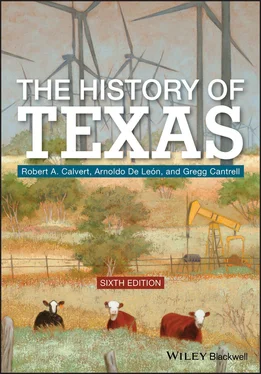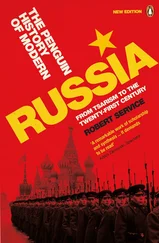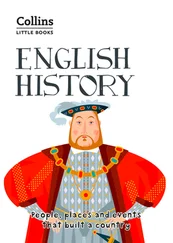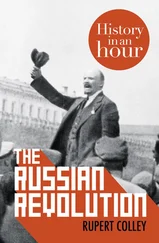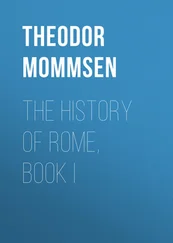Besides ideological differences over class distinctions, several other issues plagued the newly independent Mexico. These included economic chaos, the desire of military and Church officials to preserve their traditional standing alongside government, and the political inexperience of the nation’s new leaders.
Equally pressing was the need to defend the Far North from the United States and the Comanche nation. Texas, especially, had been the scene of an increased amount of activity by American adventurers since the close of the eighteenth century. In 1801, Spanish soldiers caught the mysterious Philip Nolan, an American who claimed to be looking for mustangs for subsequent sale in Louisiana. Nolan had no official permission to be in the area (present‐day Hill County, historians believe), and the Spanish soldiers, suspecting Nolan of conspiring to acquire Texas and perhaps other parts of the Crown’s northern empire, killed him. In 1806, the Spaniards repelled two US encroachments into East Texas. One was a scientific expedition dispatched by President Thomas Jefferson to clarify the boundaries of the Louisiana Territory acquired by the United States in 1803; royal troops turned back the small party at Spanish Bluff in today’s Bowie County. The second was an intrusion made by General James Wilkinson over the same disputed eastern boundary of Texas. Wilkinson and a Spanish commander avoided a major dispute when they mutually agreed to recognize a neutral ground between the Arroyo Hondo (a branch of the Red River close to where the presidio of Los Adaes once stood) and the Sabine River.
Then, in 1819, the Spaniards faced an attempt by Dr. James Long and a force of fellow filibusters to wrest Texas from Mexico. This endeavor apparently had the backing of a group of Natchez entrepreneurs who were upset over the passage of the Transcontinental Treaty of 1819. Under the terms of the Louisiana Purchase of 1803, many Americans believed the United States had bought lands that extended west from Louisiana into Texas. But the Transcontinental Treaty established the Sabine River as the dividing line between the United States and Spanish Texas. The agreement led many land‐hungry southerners to make the argument that the United States had “surrendered” Texas in order to acquire Florida from Spain. Taking it upon themselves to “reclaim” Texas from Spain, Long’s small army of filibusters penetrated into eastern Texas. The invasion was quelled in October 1821 when Spanish troops apprehended Long and took him to a prison in Mexico City. The whole Long incident created enormous distrust of Americans by Spanish (and later Mexican) officials.
These incidents were portents of threats to Texas, forebodings of forces pushing landholders westward from the US Gulf Coast slave states. An ascending cotton revolution in England during the early nineteenth century, along with other motivating impulses, stirred Southern expansionism into Mexico’s northeastern borderlands. In England, cloth manufacturers were rapidly shifting from wool to cotton in a drive to gratify public preference for cloth. The US Slave South emerged as the largest cotton producer, supplying England’s booming industrial plants as well as emerging textile mills in the US northeast. But purchasing new cotton lands in Mississippi and Alabama to meet orders came at prohibitively high costs. Southern plantation owners thereupon fixed their sights on Texas, as cheap farmland there offered prospects for cotton yields enabling growers to accommodate manufacturer demands. Allied in designs upon Texas were ordinary folks harboring their own individual and personal motives (often to flee creditors) for starting fresh in a new frontier.
Texas appeared vulnerable to US intentions given circumstances in the province. Comanches and other Indians regularly swooped into Texas settlements to rustle livestock that they intended to exchange for firearms in markets Americans set up along the Louisiana/Texas border. Southerners readily assented to the Indians’ motives, eager to acquire mules and horses increasingly needed for the heavy work of cotton cultivation. The turbulence of the raids weakened the province, leaving Tejanos contemplating opening Texas to foreign settlement as a countermeasure to Indian devastation.
The material shape of the region further made Texas vulnerable to foreign encroachment, but as in the case of Indian hostilities, outside immigration presented a remedy to the weakened state of the province. Arredondo’s campaign to eliminate all opposition to Spanish rule during the 1810s had left the outpost in ruins. His men had killed so many people or forced entire families to flee to Louisiana that the province struggled for plain survival. Colonists who remained struggled for life essentials, lacking food, clothes, and medical attention. Buildings on the eve of Mexico’s independence stood in a state of disrepair and many fields lay fallow. Anglo immigration posed dangers, but it also extended possibilities for economic deliverance.
Tejanos and local officials appealed to the motherland for help and Mexico searched for answers. Peopling Texas offered a solution to the region’s myriad difficulties, but previous plans for colonization, among them relocating people north from the interior, had failed. With about six million inhabitants settled over an expanse reaching from California to Central America, Mexico lacked the necessary personnel to occupy its vast territory. A government‐directed colonization of the area by foreigners offered an alternative course of action. Immigrants from the United States and Europe would act as buffers in preventing determined US expansion. New communities would form a barrier wall against persistent Comanche raids upon established Texas settlements–Anglo villages and farmsteads forming a cordon to buffer the western outpost of San Antonio would serve such a purpose. Industrious pioneers would help reclaim Texas from its economic plight. After careful consideration, the short‐lived Iturbide government turned to plans that would entice European and Anglo American settlers into Texas.
Actually, Spain had addressed the desperate situation in Texas just before Mexico gained its independence. In January 1821, the Spanish government agreed to a proposal by Moses Austin to let him oversee the settlement of American citizens in Texas. According to the contract, Austin was to relocate 300 Catholic families from the United States to Texas in exchange for a huge personal grant of Texas lands. Since the start of the nineteenth century, Austin had prospered in lead mining in Missouri (once part of Spanish Upper Louisiana). Then the War of 1812 and the subsequent Panic of 1819 had wiped him out, and now he hoped that the Texas venture would help him recover financially.
Upon Moses Austin's death (in Missouri) on June 10, 1821, his twenty‐seven‐year‐old son, Stephen F. Austin ( Figure 3.1), assumed the Austin contract, the Spanish‐born governor of Texas, Antonio Martínez, having recognized its legality. Prospective colonists (some of them slave owners) began to arrive in the settlement by the end of 1821, as authorized. In March 1822, however, the national congress informed Martínez that independent Mexico no longer recognized Moses Austin's colonization contract. As the legislature prepared to draft its own law, Austin journeyed to Mexico City to press his claim.

Figure 3.1 Stephen F. Austin. CN 01436, The Dolph Briscoe Center for American History, The University of Texas at Austin.
He arrived there in late April 1822. He witnessed Iturbide's coronation as emperor in July, then for the next five months waited for the new government to act. He, along with other prospective empresarios (immigration agents) also in Mexico City soliciting land contracts, pressed congress to legally embody into any colonization program the use of slavery, insisting that only through the application of slave labor could the rich Texas lands be converted into productive units. An oligarchy composed of leading families, merchants, and rancheros long living in Texas supported these outsiders in their petitions seeing, in the legitimization of slavery, benefits to economic growth but also the founding of settlements to shield them against the Indians. But the congress thought slavery in Texas problematic; most legislators opposed human bondage. An Imperial Colonization Law passed on January 3, 1823, did open Texas to settlement but it decreed that slaves brought into the province would gradually be freed. Although disappointed that the government had not endorsed the Anglos’ and Tejanos’ call for the broad legalization of the peculiar institution, Austin left partially satisfied, for his contract had been approved that March. However, with Iturbide's overthrow that same month, a new congress was called, all acts of the previous government were annulled, and Austin had to restart his petition. Finally, on April 14, the new congress confirmed his grant, authorizing him to proceed with his plans to import families under the original agreement made between his father and the Spanish government.
Читать дальше
